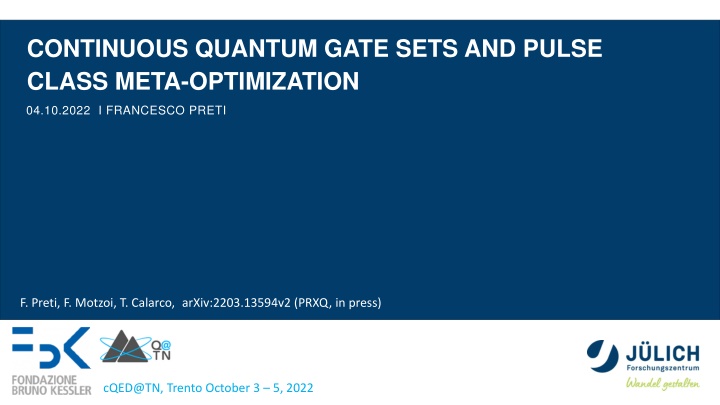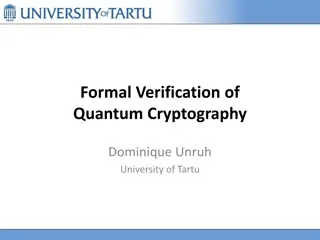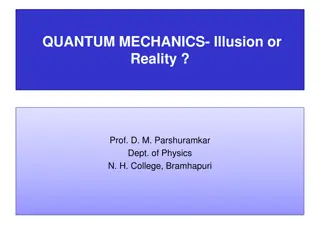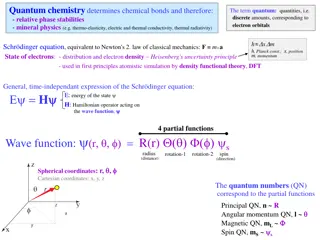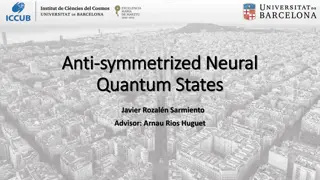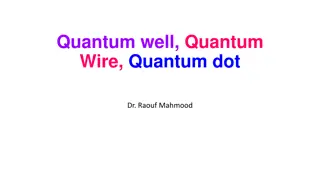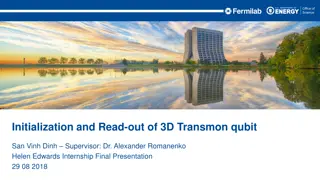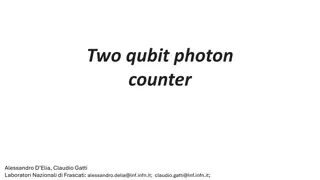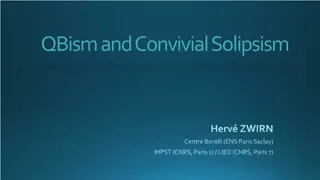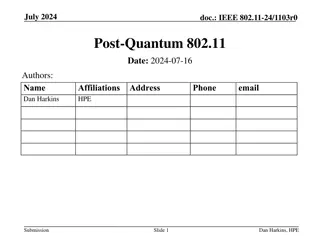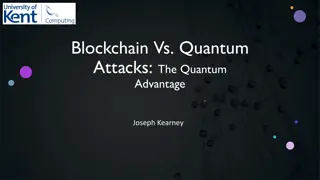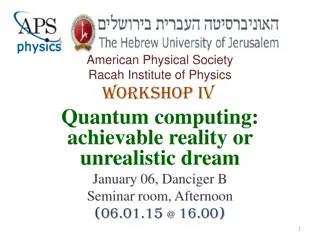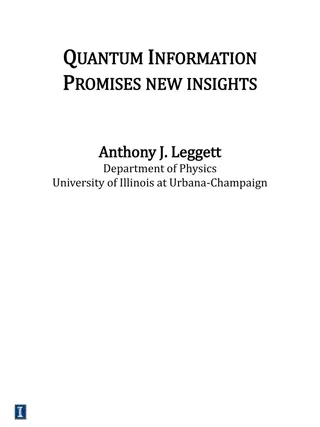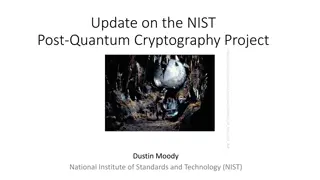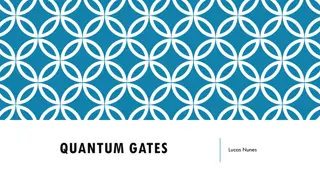Optimizing Continuous Quantum Control with Variable Parameters
The research delves into solving quantum optimal control problems with versatile system parameters through robust and analytical approaches. It explores optimizing figures of merit in quantum systems with varying Hamiltonian and pulse parameters, showcasing solutions for single-qubit and two-qubit systems. The study also addresses the scalability challenges in optimization and discusses non-robust and robust quantum control solutions, exemplifying the use of analytical techniques like DRAG for single-qubits with leakage.
Download Presentation

Please find below an Image/Link to download the presentation.
The content on the website is provided AS IS for your information and personal use only. It may not be sold, licensed, or shared on other websites without obtaining consent from the author.If you encounter any issues during the download, it is possible that the publisher has removed the file from their server.
You are allowed to download the files provided on this website for personal or commercial use, subject to the condition that they are used lawfully. All files are the property of their respective owners.
The content on the website is provided AS IS for your information and personal use only. It may not be sold, licensed, or shared on other websites without obtaining consent from the author.
E N D
Presentation Transcript
CONTINUOUS QUANTUM GATE SETS AND PULSE CLASS META-OPTIMIZATION 04.10.2022 I FRANCESCO PRETI F. Preti, F. Motzoi, T. Calarco, arXiv:2203.13594v2 (PRXQ, in press) cQED@TN, Trento October 3 5, 2022
OVERVIEW Solving quantum optimal control problems with varying system parameters: Robust approaches. Analytical approaches. Our methods (Single Optimization with Multiple Application): Based on data. Based on backpropagation. Results: one qubit with leakage. two qubits with leakage.
QUANTUM CLASSICAL LQR Controller Controller Figure of merit: QOC algorithms: GRAPE1, CRAB2, Krotov3 Classical methods: LQR, Riccati equation, etc. 1N. Khaneja et al., 2005. 2T. Caneva et al, 2011. 3D. Tannor et al., 1992.
OPTIMAL QUANTUM CONTROL PROBLEM Given a quantum system Hamiltonian with pulse parameters and Hamiltonian parameters and a target unitary operation , optimize a figure of merit Other parameters: How do they influence the system? Pulse parameters to optimize
But does it scale? Optimization cannot practically be architecture agnostic The number of degrees of freedom needs to be drastically reduced ?: 4 4 ? ?1000? correlations ? ? ? ?4? Variable Hamiltonians
QUANTUM CONTROL SOLUTIONS Non-robust: Fix parameters and optimize with an algorithm of your choice. Here the optimizer is agnostic to the problem parameters! Robust: sample parameters and maximize NICE FEATURE, BUT OFTEN EXCESSIVE. Analytical approach: Analyse system to identify a clever ansatz. Example: DRAG for single-qubits with leakage (e.g. transmon).
EXAMPLE: SINGLE-QUBIT GATE WITH LEAKAGE KNOWN ANALYTICAL SOLUTION: DERIVATIVE REMOVAL BY ADIABATIC GATE (DRAG)1 This solution can adapt automatically to parameter changes! 1F. Motzoi et al., 2009.
SINGLE OPTIMIZATION WITH MULTIPLE APPLICATION Our approach builds on both ideas: Parameter dependence AND optimization/training. Key features: Fourier parametrization. Parameter dependence. Training on generated data or directly on the control problems.
Single Optimization with Multiple Application SOMA-SL SOMA-BP
arXiv:2203.13594v2 (PRXQ, in press)) 1-QUBIT GATE WITH LEAKAGE Drift Hamiltonian: Control fields: Target gate:
arXiv:2203.13594v2 (PRXQ, in press)) 1-QUBIT GATE WITH LEAKAGE Drift Hamiltonian: Control fields: Target gate:
arXiv:2203.13594v2 (PRXQ, in press)) 2-QUBIT GATE WITH LEAKAGE Drift Hamiltonian: Control: , target gate:
PERFORMANCE OF METHODS Single qubit gate Two-qubit gate Comments: Better performance of SOMA-SL for small parameter variations. Cross-over between SOMA-SL and SOMA-BP.
arXiv:2203.13594v2 (PRXQ, in press) CONCLUSIONS We can create adaptive pulses and use a model to optimize them. SOMA-BP outperforms SOMA-SL and robust methods. We can train the model to keep the fidelity high over large parameter variations.
FUTURE OUTLOOK Experimental implementation on a QPU (including filters, AWG, etc.). Training with evolutionary algorithms and reinforcement learning. More elaborate cost-functions.
TIME DYNAMICS: MAGNUS EXPANSION F. Blanes et al., 2018
TIME DYNAMICS: MAGNUS EXPANSION For a control Hamiltonian Time dependence is in the control hamiltonians Time dynamics fully described by Fourier modes.
